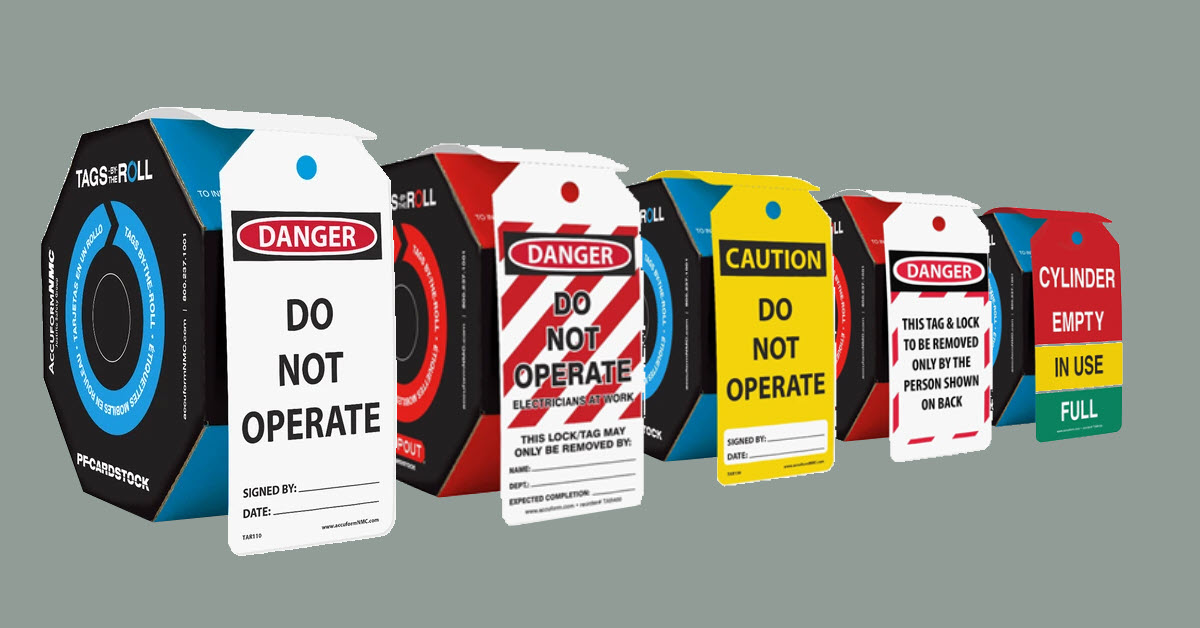
Key Components of a Lockout / Tagout Program

If your employees maintain or service machines where the unexpected startup, energization or release of stored energy could cause injury, OSHA’s Lockout/Tagout (LOTO) standard probably applies to you. The standard applies to all sources of energy, including, but not limited to: mechanical, electrical, hydraulic, pneumatic, chemical and thermal.
Failure to control hazardous energy accounts for nearly 10 percent of the serious accidents in many industries. Proper lockout/tagout practices and procedures help safeguard workers from the release of hazardous energy. OSHA requires employers to have a lockout/tagout program and to train employees in proper use of lockout/tagout procedures.
OSHA’s Lockout/Tagout fact sheet describes practices and procedures necessary to disable machinery and equipment to prevent the release of hazardous energy. Lockout/Tagout is addressed in specific standards for general industry (29 CFR 1910.147), marine terminals, longshoring and the construction industry.
5 Requirements of a LOTO Program:
Basic components of a lockout/tagout program are:
- Machine-specific procedures
- Creating policies
- Employee training
- Locks and devices to physically lock out the equipment
- Auditing the system at least annually
OSHA Standards:
OSHA has established requirements that employers must follow. Some of the most critical requirements from the OSHA standards are:
- Develop, implement, and enforce an energy control program.
- Use lockout devices for equipment that can be locked out. Tagout devices may be used in lieu of lockout devices only if the tagout program provides employee protection equivalent to that provided through a lockout program.
- Ensure that new or overhauled equipment can be locked out.
- Develop, implement and enforce an effective tagout program if machines or equipment are not capable of being locked out.
- Develop, document, implement and enforce energy control procedures.
- Use only lockout/tagout devices authorized for the particular equipment or machinery and ensure that they are durable, standardized, and substantial.
- Ensure that lockout/tagout devices identify individual users.
- Establish a policy that permits only the employee who applied a lockout/tagout device to remove it.
- Inspect energy control procedures at least annually.
- Provide effective training as mandated for all employees covered by the standard.
- Comply with the additional energy control provisions in OSHA standards when machines or equipment must be tested or repositioned, when outside contractors work at the site, in group lockout situations and during shift or personnel changes.
- Procedures must provide employees the following information, at minimum:
How to use the procedures:
- Specific procedural steps to shut down, isolate, block and secure machines
- Specific steps designating the safe placement, removal and transfer of lockout/tagout devices and identifying who has responsibility for the lockout/tagout devices
- Specific requirements for testing machines to determine and verify the effectiveness of lockout devices, tagout devices, and other energy-control measures.
What Workers Need To Know about LOTO:
Employees must be trained to ensure they know, understand and follow hazardous energy control procedures. The training must cover at least three areas:
- Aspects of the employer’s energy control program
- Elements of the energy control procedure relevant to the employee’s duties or assignment
- The various requirements of OSHA standards related to lockout/tagout
If this sounds too intimidating, there are many safety training companies that can guide you through the process. But first, take a look at a minimum LOTO Procedure example from OSHA.
Lockout/Tagout Resources:
- Visit the OSHA lockout/tagout page.
- Download the OSHA LOTO fact sheet (pdf).
- Review OSHA lockout/tagout standards for General Industry, marine terminals, longshoring and construction:
- Download OSHA publication 3120, Control of Hazardous Energy (pdf).
- View our Safety Tip on Lockout / Tagout Procedures.
- Browse Lockout/Tagout safety tags at ComplianceSigns.com.

